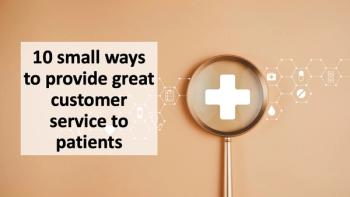
How to Ease the Strain of Flu Season in the COVID-19 Era
The key will be effective use of integrated technologies to streamline workflow and automate time-consuming processes.
Hospitals are facing numerous new challenges as a result of the global coronavirus pandemic. For starters, the ever-evolving situation has required new workflows and adjustments to address continuous changes to guidelines and regulations. Adding to the complexity, critical resources, like personal protective equipment (PPE), hospital beds, ventilators, and medication has had to be strategically allocated due to periods of short supply. As winter approaches, hospitals can expect further upheaval – especially as the annual flu season kicks into high gear.
In addition to dealing with new COVID-19 cases, providing general health screenings and ongoing patient care, providers will soon also be juggling an annual surge in flu-related emergency department visits and hospitalizations. Because of this, the U.S. Department of Health and Human Services is adding
For hospital leaders, the question remains: How can we effectively manage all these moving parts, ensuring our staff stays safe, patients get the care they need, and reimbursements continue to flow? The key will be effective use of integrated technologies to streamline workflow and automate time-consuming processes.
COVID-19 and Flu Season: The Impact on Hospitals and Healthcare Workers
The thought of an active flu season is a nightmare scenario for hospitals. Combined demand from individuals suffering from COVID-19 and the flu could easily overwhelm hospitals and ICUs.
There is some
In addition to caring for patients, hospitals are now being required to report flu, as well as COVID-19, data. And they have 14 weeks (until mid-January) to comply with these new guidelines, which include
In the height of any health crisis – whether it is the continuing COVID-19 pandemic, or the seasonal flu – the primary concern for hospitals is ensuring patients receive the care they need. Our hospitals need support operationalizing in order to provide the best care both at a population and individual patient level.
COVID-19 Reporting and Vaccination Updates are Underway
Since July, hospitals have faced new requirements for reporting COVID stats, all of which
The prospect of one or more vaccines coming to market in the near future will add to this complexity. Typically a 10- to 15-year process including three stages of clinical trials, the U.S. government is now pushing to develop and deliver more than 300 million doses of a new COVID-19 vaccine to market in a matter of months. Currently
However, once a vaccine is available, determining who should get it and when will exacerbate the administrative work for providers. The National Academies of Sciences, Engineering, and Medicine offered a framework to
Many of the potential COVID-19 vaccines will likely require two doses from the same manufacturer, delivered a few weeks apart. Already overwhelmed providers will be tasked with managing the process to ensure patients get a complete course of treatment. This is a challenge, even with long-used vaccines, as studies show that patients are
The Benefits of Innovative, Interoperable Tech Now and Beyond COVID-19
To ease the strain, hospitals should rely on technology to help efficiently screen and triage at-risk populations for COVID-19, identify patients who have tested positive for COVID-19 or the flu, to help manage vaccine schedules and to support resource allocation decisions. This real-time data reporting allows for identification of new hotspots for both the flu and COVID-19, enabling public health officials to update local policies and to make resource allocation decisions.
With the majority of patient data stored in the electronic health record, it’s crucial that core systems are able to integrate seamlessly with other clinical apps involved with testing, biometric monitoring and patient care. Having this information available in one place not only eases some of the administrative work on healthcare staff, but such solutions available today can also help hospitals proactively screen at-risk populations, monitor them for exposure to COVID-19 or the flu and ensure they get their results and the proper care as quickly as possible. Furthermore, innovative and interoperable technology can aid in streamlining follow-up processes and automating outreach to those who need to self-isolate, repeat testing, or receive their second vaccination dose.
The COVID-19 pandemic has accelerated healthIT innovation and adoption by years. As a result, we are in a position to arm our healthcare providers with the tools and solutions they need to continually fight and control COVID-19 and other epidemics so they can focus less on paperwork and administrative tasks, and more on providing quality patient care.
About the Author
Newsletter
Optimize your practice with the Physicians Practice newsletter, offering management pearls, leadership tips, and business strategies tailored for practice administrators and physicians of any specialty.








